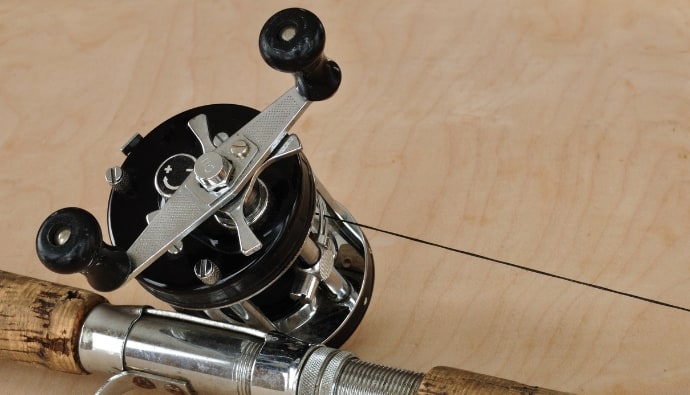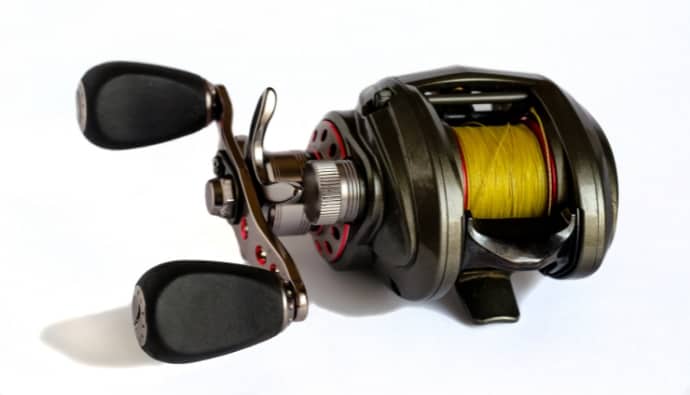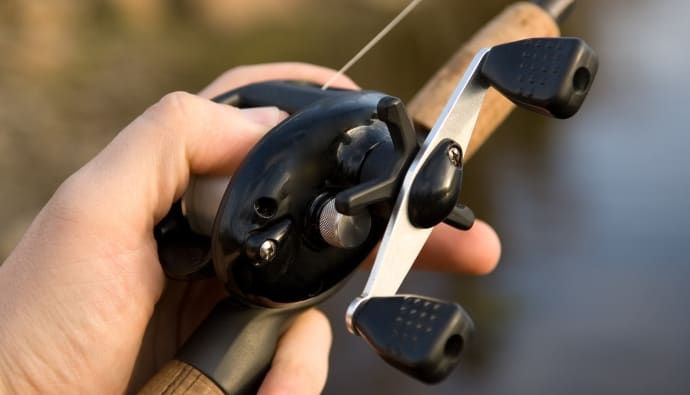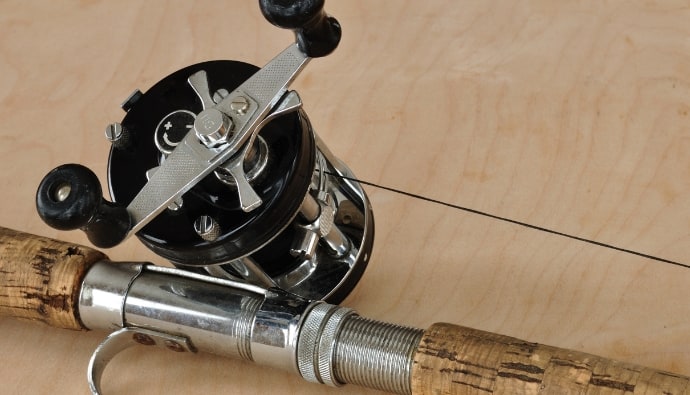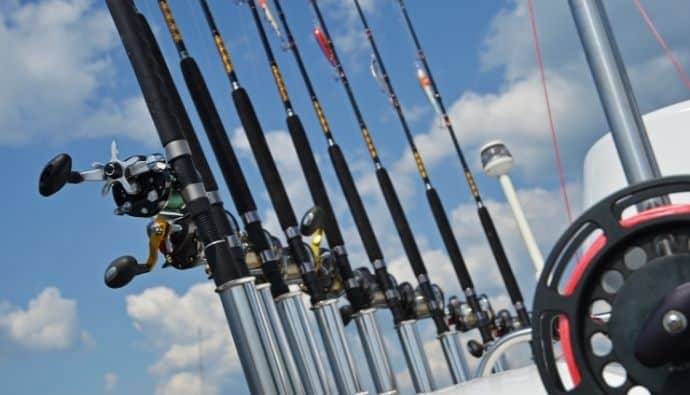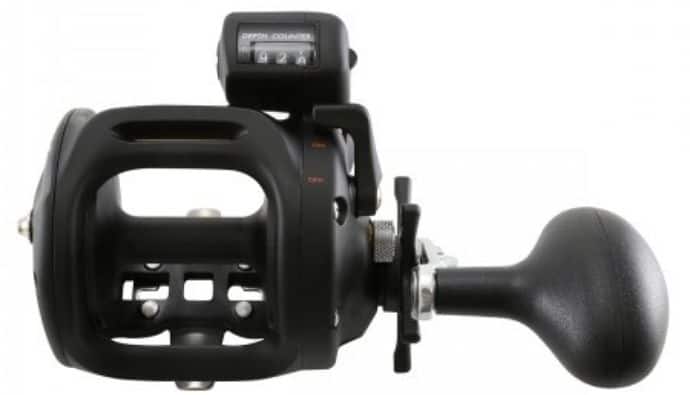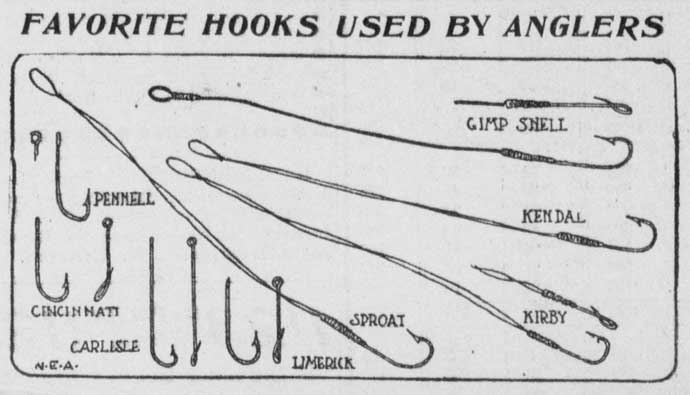Is your reel not performing as it should? Chances are it’s due for a bit of reel maintenance. However, it could feel a bit daunting if you’ve never done it before. In this article, we cover tips and steps for getting your reel back to acceptable working order.
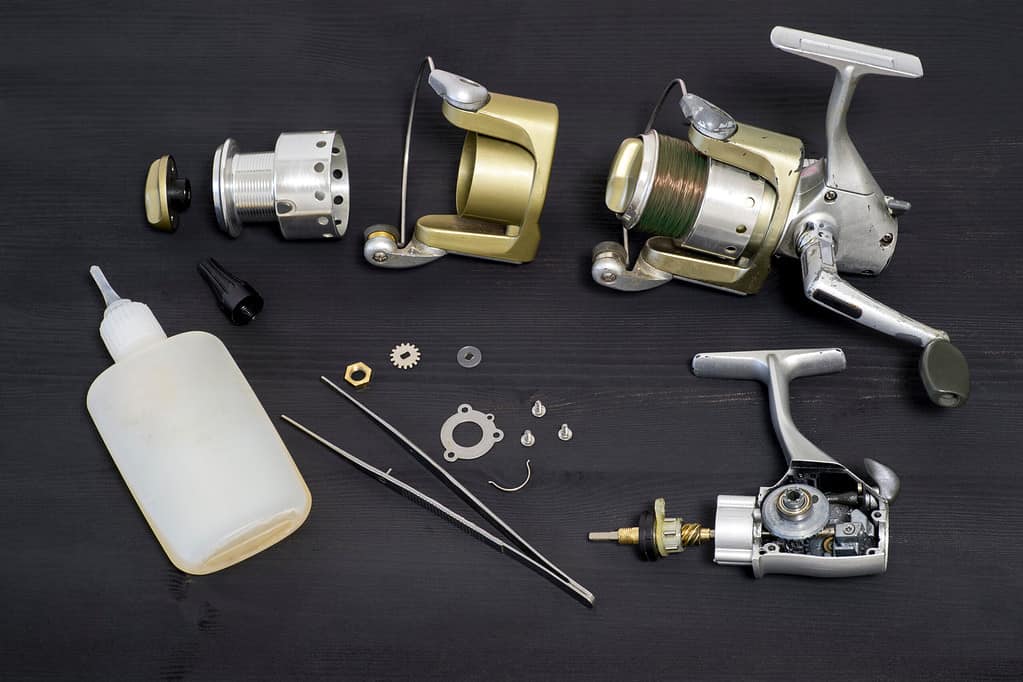
If you’re not careful with your fishing reel maintenance, it could cost you a lot of money.
How To Restore An Old Reel
You should always apply the appropriate lubricant, grease, and oil products because using the wrong one can lead to serious problems instead of making them last longer.
The best technique is to purchase the right maintenance kits specially made for your reels.
The necessary parts of a maintenance kit from a manufacturer are:
- Handles
- Rods
- Oil bearings
- Ball bearings
- Reel shaft
- Grease, oil, and lubricants
Also: Check out the best grease for fishing reels
Steps to Properly Clean Your Fishing Reel
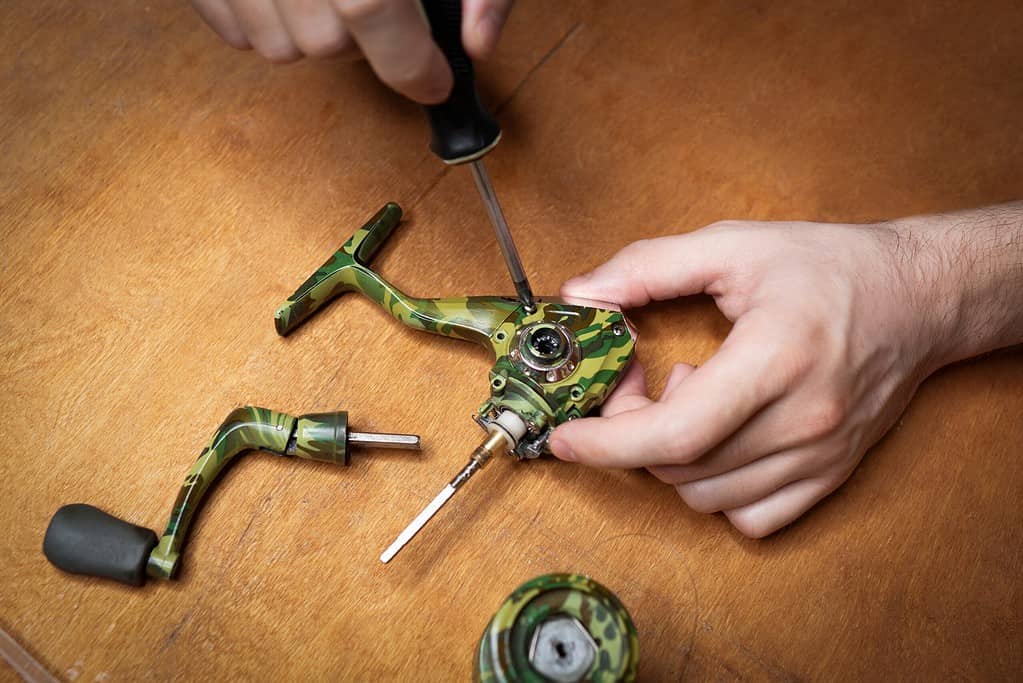
Step 1. Spray water mist on your fishing reels and use a soft rug to get rid of dirt, sand, and salt.
Step 2. Remove the spool’s top cap and then the spool from the reel shaft.
Step 3. Take out any debris and dirt anywhere near the spool top, and caps drag washers
Step 4. Apply one drop to the spool shaft’s base and move the handles to make the shaft accessible to the oil.
Step 5. Return the cap and spool and detach the handle to clean it.
Step 6. Apply oil drops to the body handles insertion to make sure it doesn’t get stuck up
Step 7. Use a q tip and apply Clenzoil to clean the roller guides.
Step 8. Use a cloth to wipe off excess sprays while putting back all the loosened parts.
Oil Your Fishing Reels Regularly
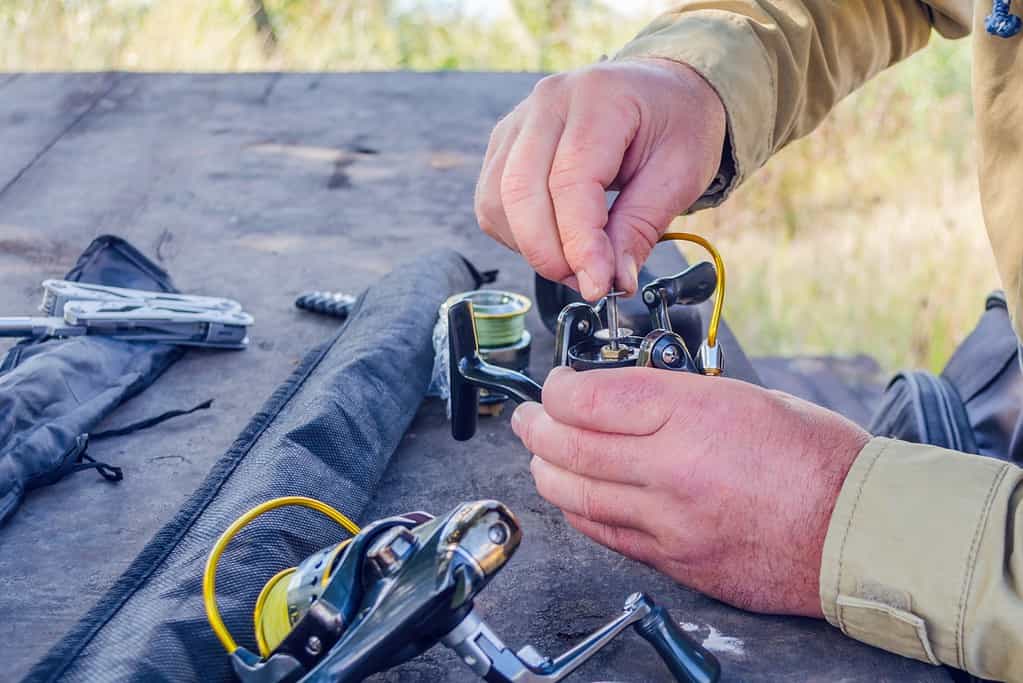
It may not be pleasing to learn how to grease your fishing reels, but this will come easily once you follow the steps.
Do not use cleaning agents such as soap bars and other random degreasers as residues may not be completely set off and lead to serious reel break. There are many kits to pick from, and here are the things you can use:
- Reel oil
- Disinfected cleaning cloth
- Gentle bristle brush
- Cleaning solvents
- Cotton
Steps to Properly Oil Your Reel
Step 1. Assemble your working area.
Step 2. Tidy up and apply oil to the bail. After opening the bail, use your cleaning solvent to its fishing line rollers and connecting parts. Scrub it using a bristle and spread reel oil to the connecting parts.
Step 3. Tidy up and apply grease to the spool. Detach the drag knob and then take out the reel body spool. Use your cleaning solvent for the drag knob, spool, and other areas.
Step 4. Apply grease to reel body bearings.
Step 5. Apply grease to the reel body. An extra light coating of grease can double the protection and completely dry it out from water when in use.
Other Tips to Maintain Your Reel
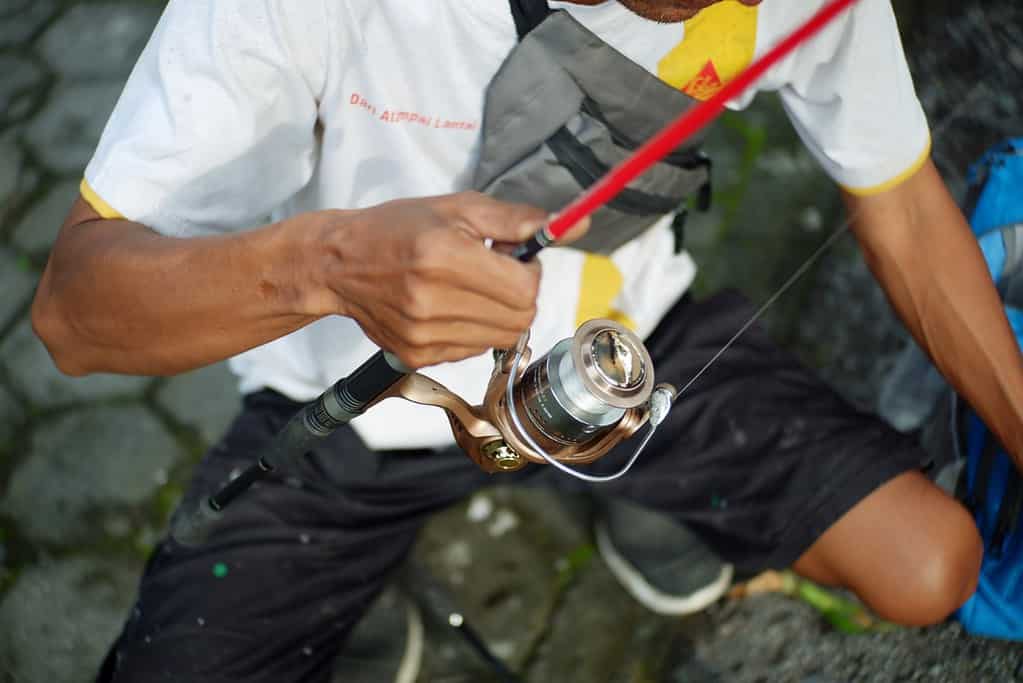
It would be best if you made it a habit to perform basic cleaning on your reel four times a month for freshwater fishing and every other fishing trip for saltwater fishing.
Anyway, repeatedly doing so can help you develop this habit.
1. Always Remember to Loosen Your Drag after Your Fishing Activity
Loosening the drag can help alleviate the pressure off the drag washers. This is the way to help them last longer.
It can also help keep the drag mechanism from getting stuck in a rigid setting. It might be a hassle to loosen it once you have already started fishing.
2. Do Not Disassemble Your Reel
Although you might be tempted to disassemble your reel, it may not be ideal to do because you might not be able to reassemble it back in a short time.
In times of emergency, make sure you have researched it to get it right. A helpful tip to note is which reel parts you have taken apart first so you will have an idea of which goes first in reverse order.

3. Clean the Reel Exterior with a Spray Bottle
Spraying gently on your gears is the best way to tidy up the exterior parts of your reel when it gets muddy or comes in contact with saltwater.
Use a soft cloth to wipe. Another precaution is to ensure that the sprayed water is just in tiny droplets, or it may get contaminated with dirt and salt particles and get to your reel’s insides.
4. Make It a Habit to Respool Regularly
This may depend on the fishing line you are using and the number of times you fish in a certain period. It’s recommended to spool a reel as often as a month.
5. Tighten the Screws
Having a loose screw in the middle of your fishing activity can lead to serious problems. There are existing reel handles that can be easily screwed on and off, so it’s important to ensure they are all screwed in place.
6. Keep Your Reel Storage Away from Direct Sunlight
When keeping your reel in storage, make sure to wrap it in a big cloth and find a place where there is no direct access to sunlight.
Schedule Your Maintenance
Conducting constant equipment maintenance can help preserve the quality of your gear. Also, it can help save money on unwanted replacements and repairs. Be sure to review your service manual, so you follow the recommended manufacturer instructions.
You won’t have to worry about the success of your next fishing adventure. It will also help you feel confident with your fishing reels.
Remember that you don’t have to exceed the necessary times to oil your reels. Doing it a few times yearly is enough for proper reel maintenance.




 Facebook
Facebook YouTube
YouTube